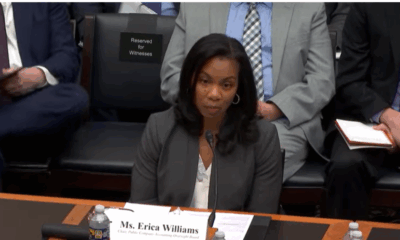A poor client experience is the reason why 49% of consumers left a brand in the past 12 months. Improving the client experience can lead to happier clients who may be less likely to switch firms.
For a moment, think about your favorite restaurant. If you frequent the location often, the waitstaff may know your name, your favorite dish and where you like to sit. All of these elements create an experience, which, when the food is excellent, keeps you coming back time and time again.
You likely even recommend the restaurant to other people you know, driving more business to the eatery.
The same idea applies to accounting firms.
Client experience is something every accounting firm must work on. Why? An experience that clients enjoy leads to:
- Brand loyalty;
- Deeper client relationships; and,
- Increase in referrals and revenue;
Your clients have options, and the experience you offer can make and keep you the clear choice. I’m going to show you how to create the ultimate client experience for your firm using a simple, step-by-step approach.
First map out your client journey
Every client your firm has will have a journey that they go through. If you don’t know what your clients are experiencing, you can’t focus on improving it. You might even be so busy managing your firm that there’s been a cultural shift that you overlook.
What can you do to map out the journey?
Sit down and ask:
- Why do clients need your services?
- Why was your firm chosen over others?
- Where are clients finding your services?
Once you have these key pieces of information, you need to understand the client’s experience from onboarding to your service delivery. If you don’t have answers to these questions, send surveys to your clients and work with your team to gain these insights.
Next, it’s time to review your tech stack, which many firms need to do to stay relevant.
Review your tech stack
If your technology is outdated or causes any level of friction, it will impact the client experience. Let’s say your firm offers online communication and a portal to upload documents. If you end up asking the client to print and sign a contract, it will look like you’re a bit dated.
Why print, scan and send documents when you can send contracts with e-signatures?
Clients want convenience.
You need to look at what technology they’re interacting with in your marketing efforts, when signing on as a client, while they’re utilizing your services, and even when they are offboarded. Your team also needs to use the right tech stack to boost productivity and efficiency, which leads to better client experience.
Ideally, you’ll review your tech stack annually because behaviors change, and expectations evolve, often growing higher.
For example, consider the client experience around tax organizers. Firms often struggle during tax season because clients do not complete tax organizers. Your team will spend excessive time contacting the client and filling in the “blanks” in the information the client sends over.
Low completion rates are often due to tax organizers being clunky, frustrating and time-consuming, and requiring clients to print documents
With the technology available today, your tax organizers shouldn’t ask clients to print and bring papers to the office. Integrating the right tech stack and software can streamline the entire experience and increase completion rates.
For example, StanfordTax’s personalized client questionnaires are designed to focus on the client experience by skipping over irrelevant questions. By integrating with your tax filing software, it can use prior-year data to determine what questions to ask and what questions aren’t necessary.
Even form reminders are sent automatically, alleviating many of the mundane tasks that accountants waste time on.
Your tech stack needs to simplify processes, reduce errors and hold clients accountable when working with your firm, all of which contribute to a better overall client experience.
Multiple areas of your tech stack may need to be improved, and once you’ve identified these weak links, you can pivot into client communication.
Communicate, communicate, communicate
Communication is often at the heart of client complaints. Clients can easily become frustrated if they don’t receive a timely response or their accountants don’t take a proactive approach to communication.
Having a clear policy can help create the ultimate client experience. Make sure your clients understand:
- When they can expect a response (one business day, two business days, etc.), even if it’s just to let them know that you need more time.
- How often they will hear from you. Will you touch base every month, week or quarter?
- Which channels you use to communicate. Will you touch base via email, in-person, Zoom calls, phone calls or some other way?
Communicate your policy during onboarding so that clients know what to expect right from the start.
Request and utilize client feedback
To create an amazing client experience, you need to know what’s working, what’s not working and what clients want or need that you’re not delivering on.
The best way to get this information is to implement a feedback loop into your client workflow.
Gathering feedback doesn’t have to be complicated. You can request it at a cadence that works for your firm and your deliverables. It could be monthly or even yearly after you complete their taxes.
The simplest way to request and gather feedback is through email. You may even want to include a net promoter score to track how clients feel about your firm.
Your feedback request can also include important questions, like:
- How can we be most helpful to your business?
- What’s going well in your business?
- What’s not going so well in your business?
If you want to keep things simple, send a personalized message asking each client about their satisfaction with your services.
Requesting feedback is half the battle, but when you do get it, make sure that you put it to work and start improving your services.
Final thoughts
Creating the ultimate client experience will take time, effort and a solid plan, but it’s worth it. Happy clients stick around and may even send referrals your way. Great experiences can also lead to positive reviews from clients, which can bolster your reputation and help you attract more clients.
Remember, 50% of consumers trust reviews as much as recommendations from family and friends, so make it a priority to deliver the best possible client experience using the tips above.


 Accounting1 week ago
Accounting1 week ago
 Economics1 week ago
Economics1 week ago
 Personal Finance1 week ago
Personal Finance1 week ago
 Accounting1 week ago
Accounting1 week ago
 Finance1 week ago
Finance1 week ago
 Economics1 week ago
Economics1 week ago
 Economics1 week ago
Economics1 week ago
 Economics1 week ago
Economics1 week ago












